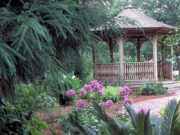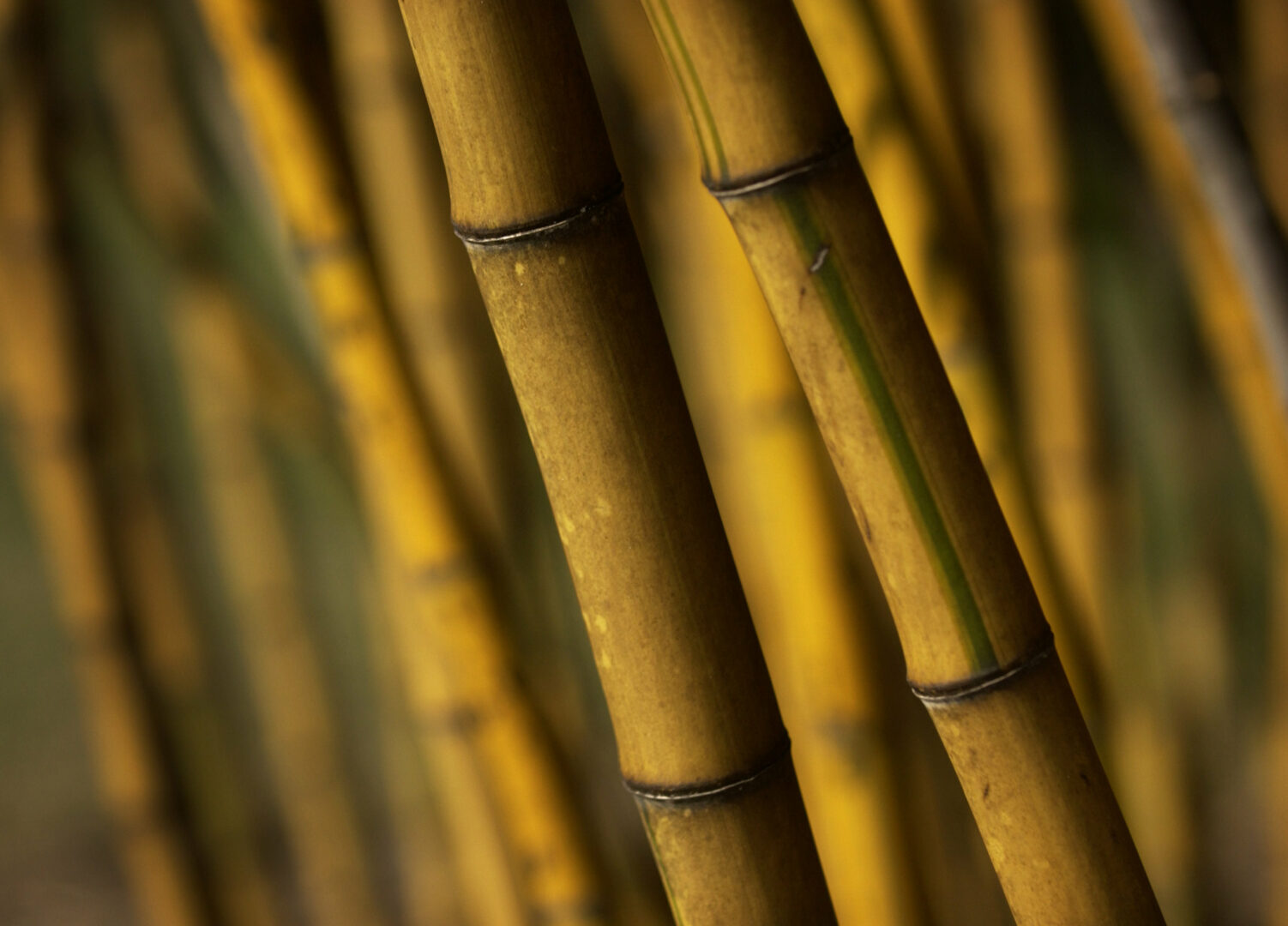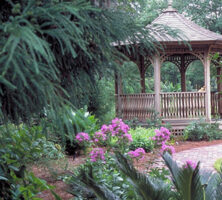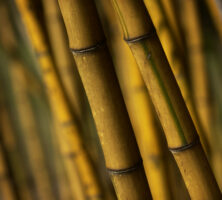Historic plant collections at the University of Georgia Bamboo Farm and Coastal Gardens began in 1890, when Mrs. H. B. Miller planted three bamboo plants, obtained from Cuba, at a site in southwestern Savannah. By 1915 the original three plants had multiplied into a flourishing bamboo grove, and the site was brought to the attention of David Fairchild, a botanist and plant explorer with the U.S. Department of Agriculture (USDA). Fairchild saw the warm climate and fertile soils of Savannah as an ideal spot for a plant introduction station. In 1919 a friend of Fairchild’s, Barbour Lathrop, who was also a supporter of U.S. plant exploration, purchased the forty-six-acre tract. Lathrop leased the property to the USDA for $1.
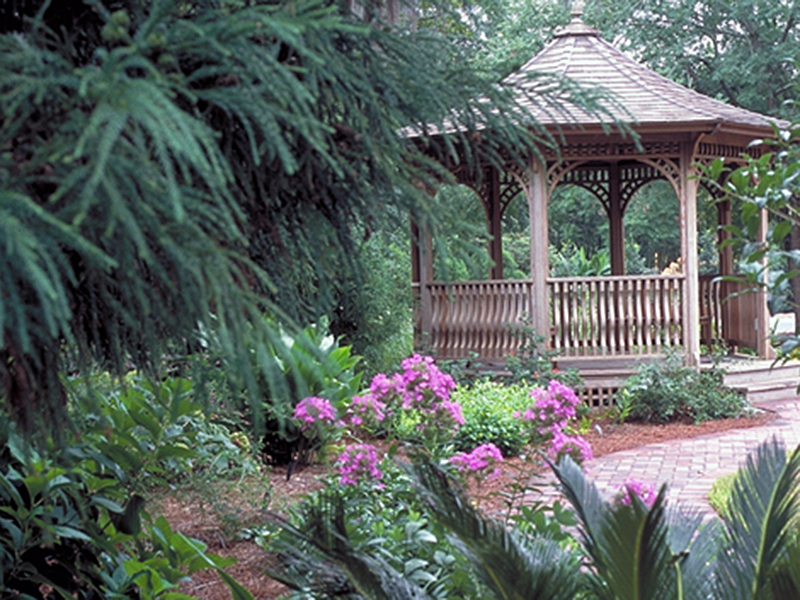
Courtesy of Georgia Department of Economic Development.
For more than sixty years plant materials gathered from all parts of the world by explorers and botanists were planted at the Savannah site. The USDA operated the Plant Introduction Station until 1979, when the station was closed as part of a USDA budget reduction. Four years later, the property was deeded to the University of Georgia for use as a research and education center.
The Atlantic Coast area is a unique environment. With its long growing season, warm climate, and sandy soil, many plants that cannot be grown in other parts of Georgia prosper in this region. This has made the Bamboo Farm and Coastal Gardens a valuable resource because it has become a center for unbiased information on the performance of plants, particularly ornamentals and turf, in coastal Georgia.
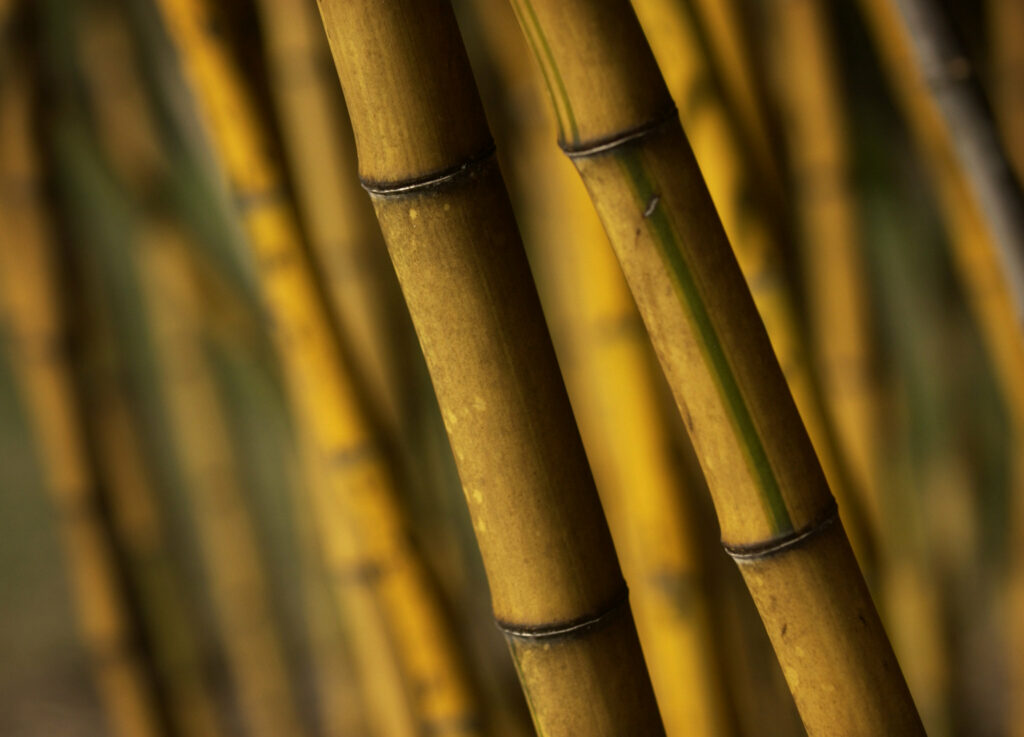
Image from UGA CAES/Extension
In the spring of 2003 university officials announced that funds for the Bamboo Farm and Coastal Gardens were being reallocated, due to budget cuts. Research continues at the center with funds from other sources, and the center has become a satellite office for the Chatham County Extension Service.
Research and education projects initiated at the center involve scientific disciplines in crop and soil science, horticulture, plant pathology, and entomology. Information obtained from these projects is allowing landscape professionals, nurserymen, homeowners, and greenhouse growers to select and promote plant materials that are well adapted to the coastal environment.
In addition to those engaged in research, more than 10,000 people a year visit the farm, which is open to the public. Visitors can enjoy the 140 varieties of bamboo and tour the educational display gardens.


